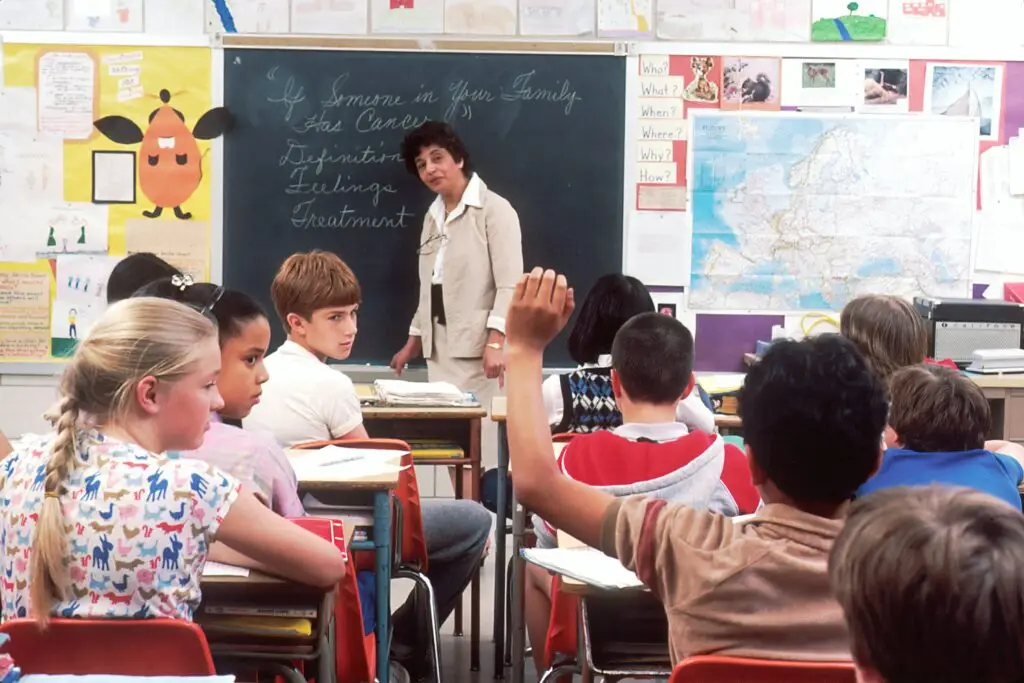Introduction: Why Tracking Tools Disappoint Teachers
Understanding the components of an effective Behavior intervention plan is crucial for educators. A well-structured Behavior intervention plan can significantly enhance teaching strategies and student outcomes.
Today, teachers are faced with numerous responsibilities, including planning lessons, meeting standards, engaging with families, and, crucially, monitoring student progress. However, too often, the tools they have been introduced to use have not aligned with the reality of the classroom. Most schools are using outdated platforms that were designed primarily for administrative reporting rather than everyday teaching. The result? Teachers spend countless hours handwriting grade lists, behavior notices, and intervention update packets; time they could use to work directly with students. A 21st-century student progress tracking system should simplify the work of teachers, not the other way around. It should cut to the chase, save time, streamline paperwork, and offer clear, valuable insights at a glance. In this guide, we will dissect precisely what teachers are looking for in a student progress monitoring system —and how a flexible tool can unify academic data with positive behavior supports and efficiently integrate with your current school management software.
Ultimately, a tailored approach to tracking is essential, especially when implementing a Behavior intervention plan.
Why the “One-Size-Fits-All” Tracking Tools Fall Short
Most existing student tracking systems are static in nature. They aggregate test scores and grades but overlook the context — the behavioral trends, attendance patterns, and social-emotional well-being. Teachers understand that a student’s proficiency on a test is only one piece of the puzzle. To truly push a student forward, they need to see the whole student, not just their academic potential. The issue: Many of the tools were developed decades ago for compliance reporting, rather than providing teachers with daily insights into their classrooms. They tend to be short on real-time data and do not align well with modern frameworks such as MTSS (Multi-Tiered Systems of Support) or PBIS (Positive Behavior Interventions and Supports). The answer: A new tool needs to be more modern than that. It should incorporate tools that bridge students’ academic information with positive behavior supports so that teachers see the whole child, not just test results.
See How Pulse Addresses This
There Are 3 Must-Haves #1: Simplicity and Ease of Use
Teachers do not have time to wrestle with clunky software. If something is not intuitive, do not use it – period. The best progress tracker tools have clean, neat dashboards where it is painless to enter information and effortlessly perceive and understand it later. Key features: Quick, clear dashboards for grades, assignments, and behavior logs. Visual indicators — graphs, coloring, and trend lines — that let you see problems at a glance. Mobile-friendly access allows teachers to update notes on the go. “Ask yourself: ‘Will this save me time every single day?’ If not, it is just not the right fit.
Must-Have #2 Holistic Data—Academic + Behavior + SEL
Well-rounded student data. We all know, and most of us agree, that we need data that provides a complete picture of our students and their ability to succeed. Grades are not everything. Teachers require data tools to capture academic progress, behavior, and social-emotional development. When you have tools that help illustrate that theoretical positive behavior supports, which are strategies and systems to support positive behaviors and reduce challenging ones, they have to be connected to educational information, so you can get a better picture of why a kid might be struggling. For example, do higher rates of absences accompany a decrease in math scores? Do the behavioral problems occur/in specific subjects or at particular times? Are behavioral interventions (HELPV) effective over time? A great tool must be able to connect these dots and save teachers the time it takes to solve the puzzle, allowing them to intervene sooner.
Essential #3: Layer Tracking to Personalize Support
Every student is unique. Some individuals require either Tier 1 universal support, Tier 2 small-group assistance, or Tier 3 intensive, personalized interventions. A sound progress monitoring system should be a tiered tracking system, allowing teachers to track progress for each tier in one location. Teachers should be able to pair students on risk level, firm tier, or support tier. Set personal objectives and track your progress. Share crystal clear, real-time progress reports with parents and school administrators.
#4 – Ability to Integrate with Existing School Management Software
No teacher wants another separate login. The best student progress tracker will complement, rather than compete with, existing school management platforms. Why integration matters: Student lists, schedules, and demographics should come down directly from the SIS. Grades and assessments can sync back and forth on either side. Changes would be reflected in real-time for teachers, administrators, and even parents. When your products can talk to each other, you are not wasting time entering the same information over and over — you are using data to focus on the most critical questions of student success.
Must-Have #5: Real-Time Data for Early Cloth Diaper Intervention
Real-Time Data for Early Intervention. Real-time data refers to information that is updated immediately as it becomes available. This type of data is crucial for early intervention. Logging and accounting for the dates, times, types, and amounts of urine helps with tracking and intervention. Old data is not valid. What teachers need are timely insights that they can act on now, not next month. A useful tracking device will alert teachers to early warning signs — such as a slip in grades, repeated absences, or a pattern of escalating behavior — so they can act long before a student’s minor issue becomes a significant problem. Best practice: Select a system with automated alerts or dashboards that signal to you which students’ accounts are falling behind or demonstrating risky patterns. This allows teachers to focus their energy where it is most needed.
6 – Easy Contact with Families
Political Content Minimum_parent_votes, intramax +; RealClear — Average ParentVotes, intramax. Not many politicians have the time or resources to maintain direct lines of communication with family members at home. It is family that makes a difference in student success. However, many teachers struggle to keep parents informed without an overwhelming workload. A good tool should allow you to instantly communicate progress reports, stay updated on attendance, and leave behavior notes. Feature strengths and areas that need support. Provide families with practical strategies for reinforcing what works at home. When teachers, students, and families are aligned, everyone benefits.
Real-Life Example: What a Modern Tool Can Do
Picture Ms. Davis, a 5th-grade teacher, balancing math scores, daily behavior logs, and a small reading intervention group. Using an antiquated system, she has to put her grades in one tool, track behavior notes in a spreadsheet, and log interventions on paper. Parents are only alerted to problems at report card time. Because there is a modern student progress tracking tool that integrates academic data with positive behavior supports and complements existing school management software, Ms. Davis now sees all of it in one place. She receives automatic alerts when a student’s math scores tumble or behavior referrals surge. She can report a dynamic update at any moment to her parents, who know exactly how to reinforce it at home. Moreover, she frees up hours of her time each week that she can use to plan engaging lessons or provide one-on-one support to students.
How to Select a Tool
When evaluating options, ask: WHY IS IT SO UNUSUAL: Is the academic and behavioral information all in real-time? Can it follow students wherever they may be in a multilevel system of instruction? Does it work with our SIS, and can it be integrated with the systems we already have? Are teachers able to teach it easily and employ it every day? Does it enable meaningful communication with families? If you answered yes to all, you are on the right path.
Bringing It All Together
Teachers want to do more than use a digital gradebook. They crave a student progress monitoring solution that gives them time back, aligns academic data with positive behavior supports, and can integrate with their existing POS or SIS/district-wide system with no additional hoops to jump through. The right system provides clarity, enables early intervention, promotes family engagement, and empowers teachers to feel confident about where they are directing their energy. If you want to help your teachers spend less time on administrative tasks and more time teaching, it is time to explore today’s student progress-tracking solutions that support modern classrooms.
Ready to Make Tracking Simple?
How you can change your school with the right tool. Want to know how the right tool can revolutionize your school’s approach? Get in touch now and find out how a user-friendly, all-in-one progress tracking option can save you time and boost your input – your team will always have the support they need every step of the way.



